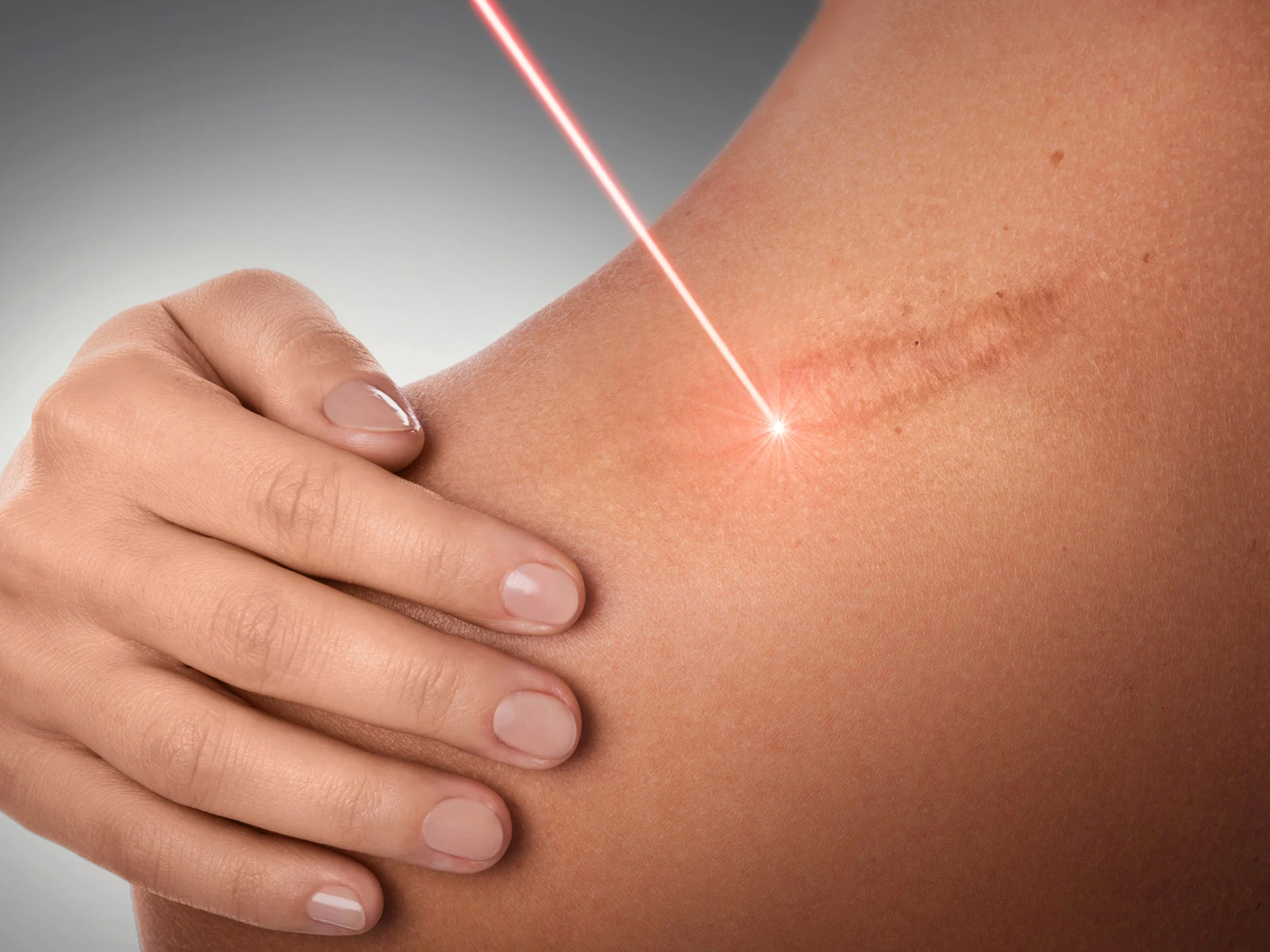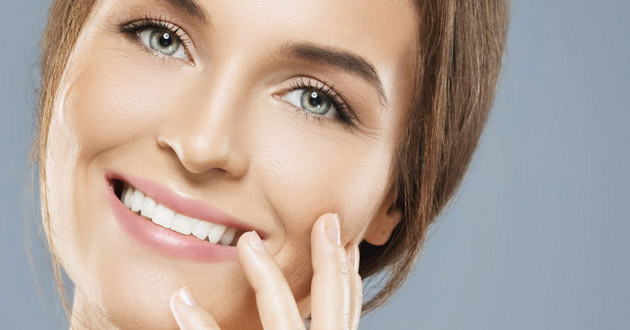More about scar removal
What is scar correction?
What types of scars are there?
Which methods of scar correction are there?
What criteria must be met to perform a scar correction?
What are the benefits of scar correction?
Can scars be completely removed?
What risks are involved in scar correction?
What is the cost of a scar correction?
As a collective term for a variety of treatments, the removal of scars offers the opportunity to smooth out old and new scars caused by surgery, injuries or burns and to make them less noticeable through various procedures. You can remove a variety of scars, and the method used depends on the type of scar. For optimal results, a combination of different scars removal procedures is often necessary.
In order to be able to remove a scar, a dermatologist or a plastic and aesthetic surgeon must first perform a precise analysis of the tissue. Only in this way it is possible to choose the optimal treatment method to remedy the blemish.
Types of scars
How strongly visible a scar is formed depends not only on the genetic disposition, but also on the type of injury and the post-treatment immediately after the scar is formed.
Contracture
Burns and chemical burns usually cause large-scale scars, which make the skin inelastic and firm. Not infrequently, they are associated with movement restrictions and pain. These scars are called contractures.
They are usually treated by skin grafting or flap surgery. This form of scar repair is an operative procedure.
Keloids
After surgery or injury, so-called keloids can develop. The mostly spherical, darker growths of scar tissue grow beyond the scar line and can make the appearance of the scar unsightly and very noticeable. The desire to remove them can be very great.
Keloids can be downsized by a regular injection treatment. For particularly stubborn keloids, surgical removal followed by injections and compression therapy may be required to completely inhibit their growth. Since keloids tend to occur again and again, it is often not easy to ensure permanent removal.
Hypertrophic scars
Hypertrophic scars are scars that are particularly pronounced and have bulges or elevations, but do not grow beyond the injury area. They are caused by excessive production of connective tissue, caused by inadequate immobilization of the wound immediately after surgery or injury or by additional infection of the affected skin areas.
Hypertrophic scars can also be reduced by injection of cortisone-containing substances. If this form of correction of scars is not sufficient, surgical removal of the scars with subsequent injection treatment is also possible here.
Acne scars
Acne scars can develop after acne vulgaris, the most common skin disease. Young people are particularly affected during puberty when the hormonal balance changes. Depending on the severity and healing process, these scars are more or less visible. There are two forms: atrophic and the hypertrophic scars. The former are sunken deep and hole-like in comparison to the surrounding skin. They are caused by loss of tissue, because too few connective tissue fibers were produced to cover the destroyed tissue. Hypertrophic scars appear as an excessive bulge of the skin or scar tissue. Too much new tissue has been produced that does not have the same structure as healthy skin tissue. Acne scars can be alleviated by injection treatments (see: hypertrophic scars).
Stretch marks
Stretch marks are caused by a strong stretch of the lower skin tissue. Especially when gaining weight, stripe-like marks can appear on the abdomen, chest, hips, buttocks, thighs and upper arms. They are often caused by the weight gain of pregnancy. In part, stretch marks are also an expression of a predisposed connective tissue weakness. The skin can rip at even small increases in weight and shows itself as thinner or thicker stripes. One way to effectively remove stretch marks is by microneedling. Fine needles penetrate deeply into the skin and stimulate the production of collagen. New, healthy tissue is created.
Plastic surgery offers several ways to remove a scar. Which method is best for scar correction depends on the type of scar and the severity of the scarring. The best course of action can be discussed in a detailed consultation with your plastic surgeon.
Treatment options for scars
Skin grafts and skin flap procedures
In a skin graft or flap surgery, healthy tissue is removed from the body and transplanted to the damaged area of the skin. This is an operative procedure. As a rule, the body tissue grows well after the procedure. Both the collection and the recipient site heal well. These corrective measures are often used after burn accidents and chemical burns or chronic ulcers and larger wounds.
Injection treatments with cortisone-containing substances
With keloids and hypertrophic scars, cortisone is injected into the scars at regular intervals to reduce excess collagen production. As a result, the skin flattens slightly and becomes smoother. Injecting the substance may be considered relatively painful, but the response rates of this treatment are so good that the method can be recommended for keloids and hypertrophic scars.
Microneedling and thread lifting
Acne scars or stretch marks can be improved by needle or thread lift. In microneedling, the skin structure is opened with sterile microneedles, which sets a regeneration stimulus that renews the skin from below. With thread lifting, the introduced threads cause a stimulation of collagen synthesis and thereby an improved appearance and a revitalization of the skin structure.
Whether one is suitable as a patient for a scar correction depends on the chosen method. First of all, it has to be decided how the existing scar can best be corrected. This is done in a first consultation with your treating plastic and cosmetic surgeon.
If an injection treatment to remove the scar is in question, it must first be checked whether the patient has an allergy or intolerance of the injected substance. For surgical procedures, the patient should be physically fit enough to undergo general anesthesia. If this is not the case, local anesthesia may be an option.
This is, mainly, a cosmetic surgery, performed for aesthetic reasons. This is especially true with visible scars. Not infrequently, sufferers also associate unpleasant memories with their scars and would like to have them removed for this reason. Scar correction is a step towards a better life, especially with large burn scars that can seriously affect well-being.
Another advantage of scar removal is that it can also relieve pain or movement disorders caused by scars.
Burns or burns that damage the skin over a large area cause severe scarring that makes the skin inelastic and causes it to contract. A correction by means of skin flap plastic surgery is a major intervention, but its results are quite effective.
Advantages of removing a scar at a glance
• Comparatively small interventions
• Very gentle treatment
• Firming effect
• Besseres Hautbild
• If necessary, elimination of pain and movement impairments
Complete removal of scars is usually not possible. Scar correction, however, can significantly reduce, smooth and adjust the color of the scar to the surrounding healthy skin. Thus, originally noticeable scars are barely visible and the appearance of the skin is significantly improved.
The smaller incisions to correct scars are considered to be low in risk. Simple surgical procedures for the removal of ridges or keloids are usually uncomplicated. Only bruising and slight swelling may occur after surgery. However, this is quite normal and is not a cause for concern. When keloids are removed, they may grow back, necessitating a repetition of the procedure. In the case of scar correction by means of injections, it must be clarified in advance whether the patient has an allergy or intolerance to the injected substances. If this is the case, alternative scar removal treatment should be considered.
If a skin flap plasty or a skin graft to correct the existing scars is necessary, a major intervention is needed. As with other surgical procedures, it can also cause infection, swelling, bruising and pain. In addition, there is a risk that the transplanted skin is recognized as "foreign material" and rejected. This should be prevented by the optimal choice of donor skin.
How much a scar correction can cost is difficult to determine at this point. The price of a scar treatment depends on the chosen method of scar correction and the size and type of scar. These factors determine the extent of the intervention required.
Since scar correction is usually a cosmetic procedure, the costs are usually not covered by health insurance.




